Abstract
We have studied the patterns of mutation and X inactivation in female carriers of a fragile X mutation, to try to correlate them with various phenotypic features. We used a simple assay, which shows simultaneously the size of the mutation, its methylation status, and DNA fragments that represent the normal active and inactive X chromosomes. We have observed an age dependent process, whereby the 'full' fragile X mutation is found preferentially on the inactive X in leucocytes in adult females, but not in younger ones. This phenomenon was not observed in female carriers of a 'premutation', who have little phenotypic expression. Preliminary data suggest that young females who show preferential presence of a full mutation on the active X in leucocytes may be at increased risk for mental retardation. We have also obtained preliminary evidence for an age dependent decrease in the somatic heterogeneity of full mutations, possibly owing to selection for smaller mutated fragments. If confirmed, the latter phenomenon might account for the known decrease with age of the expression of the fragile site. Our observations suggest that a gene whose expression is affected by the presence of a full mutation (possibly the FMR-1 gene) has a cell autonomous function in leucocytes, leading to a slowly progressive selection for cells where the mutation is on the inactive X chromosome.
Full text
PDF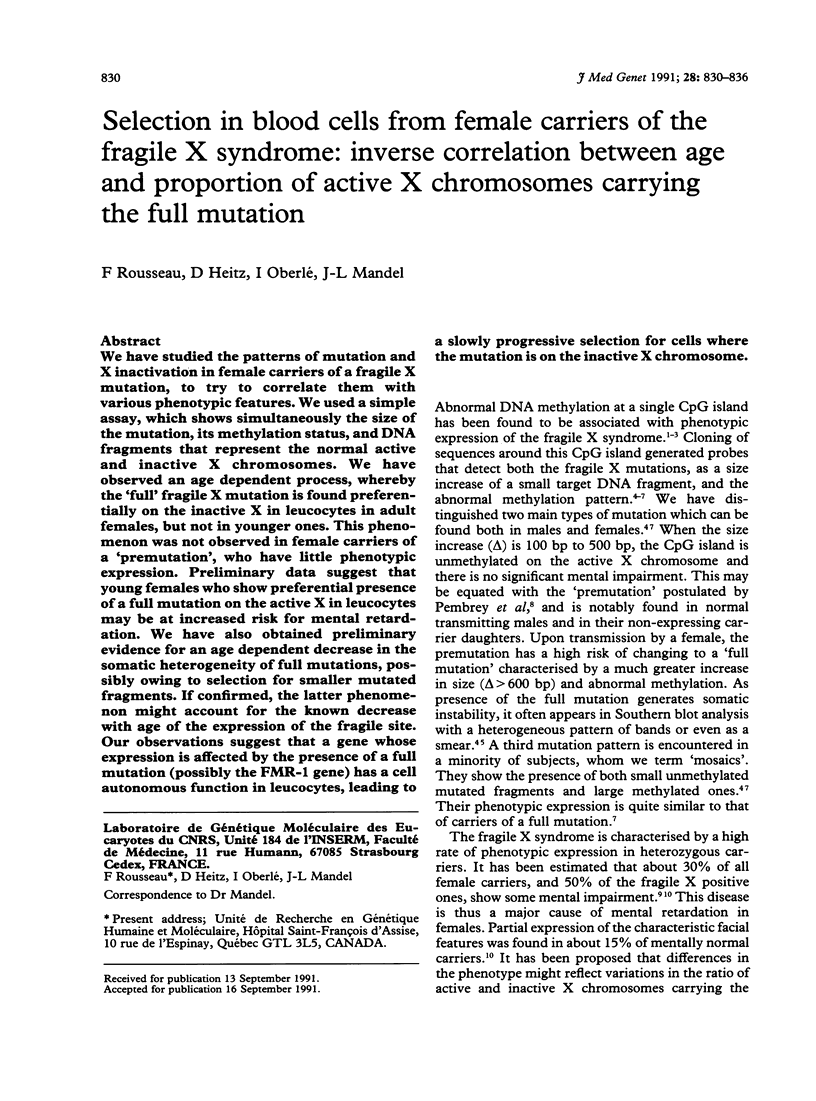
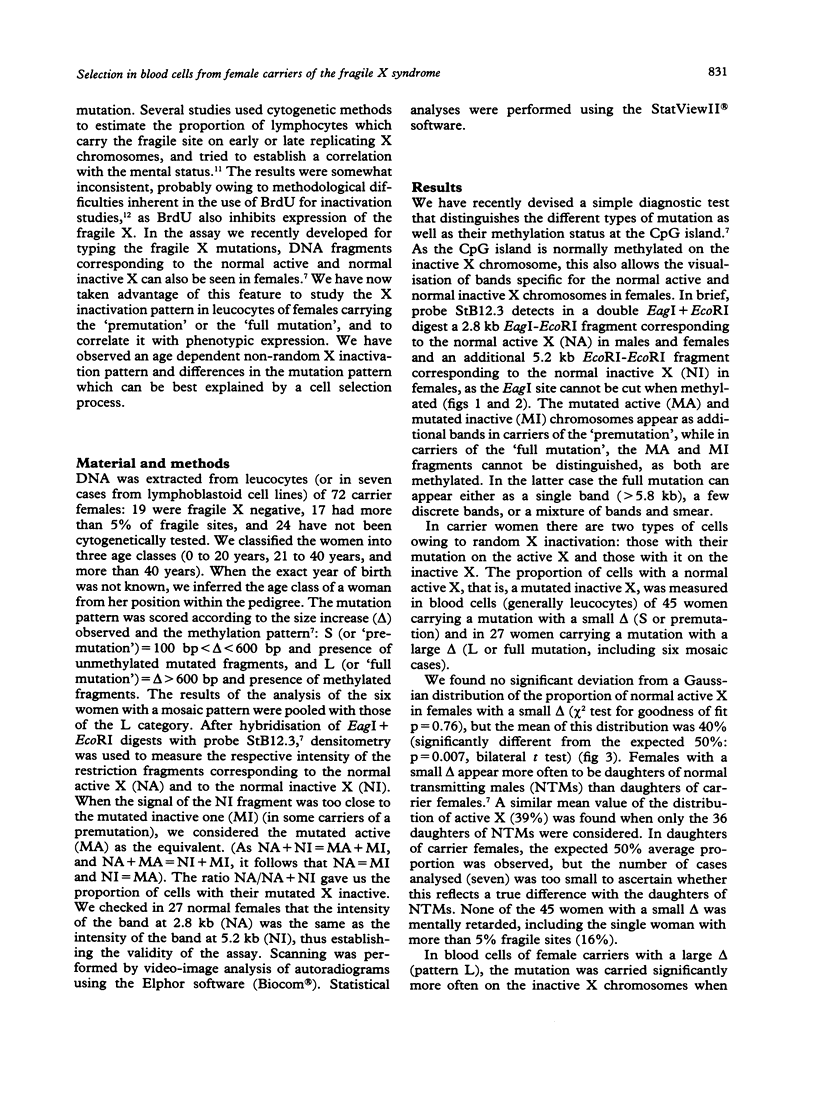
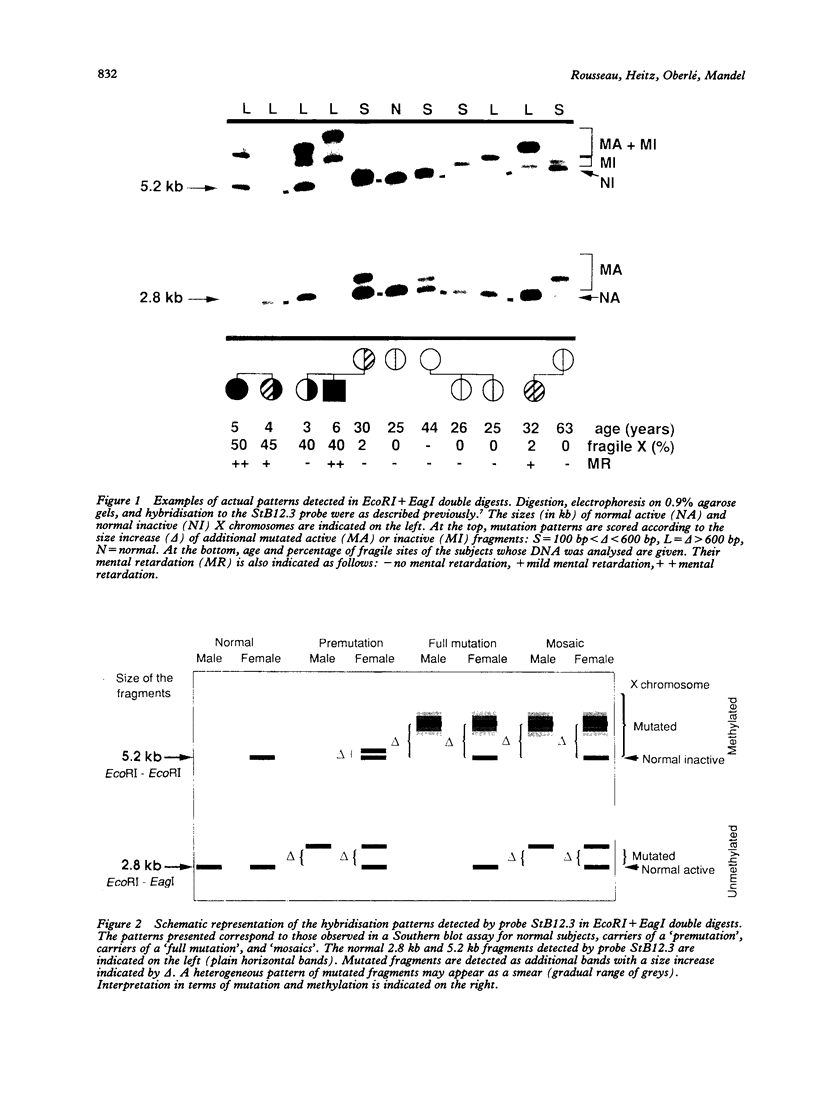
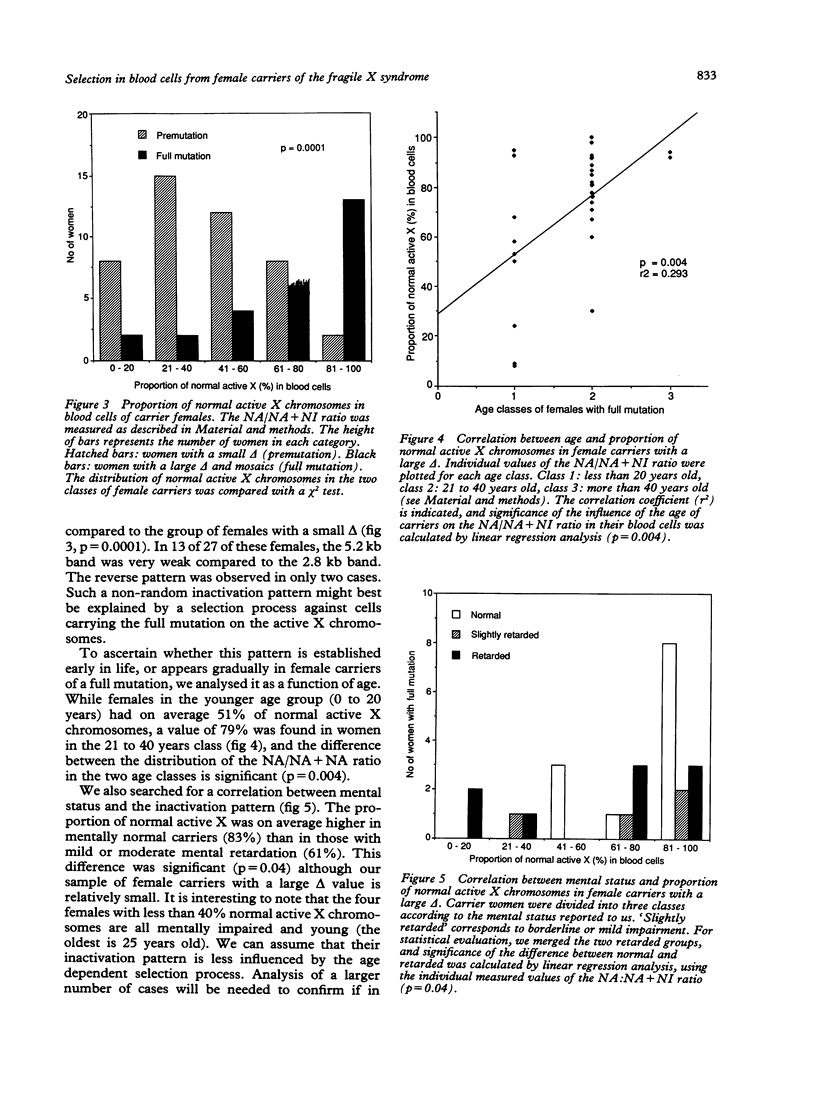
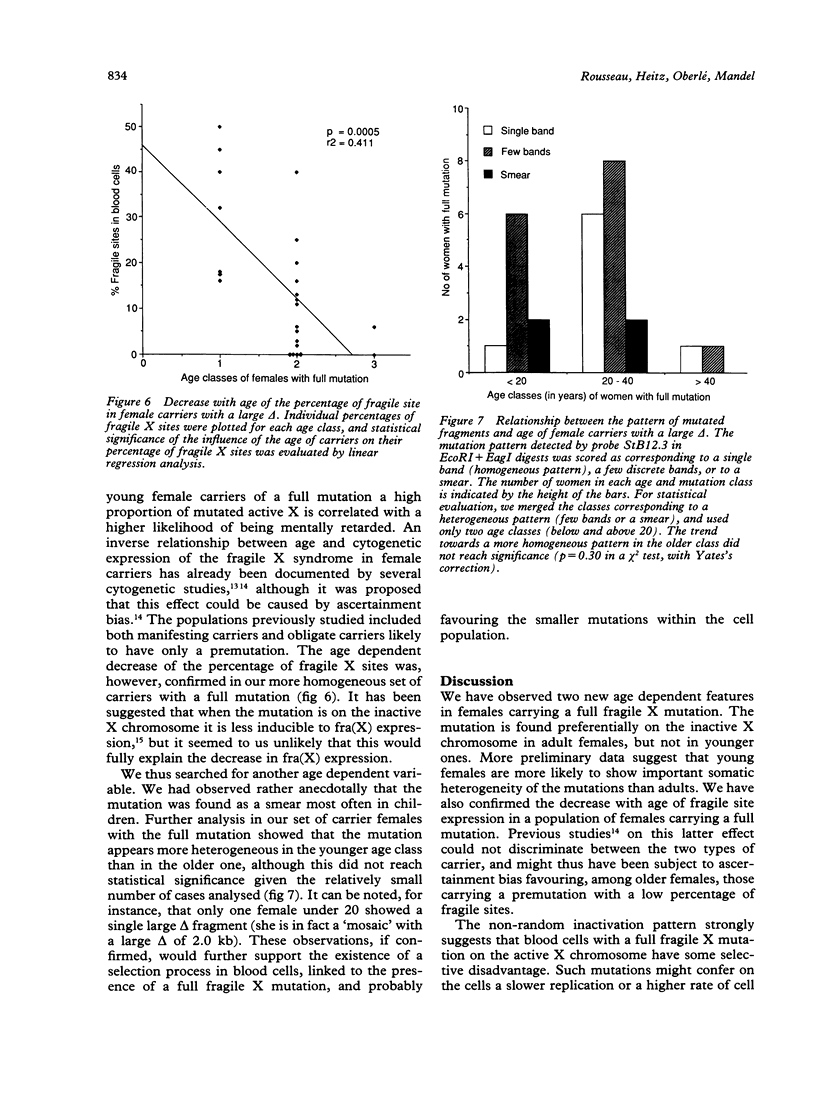
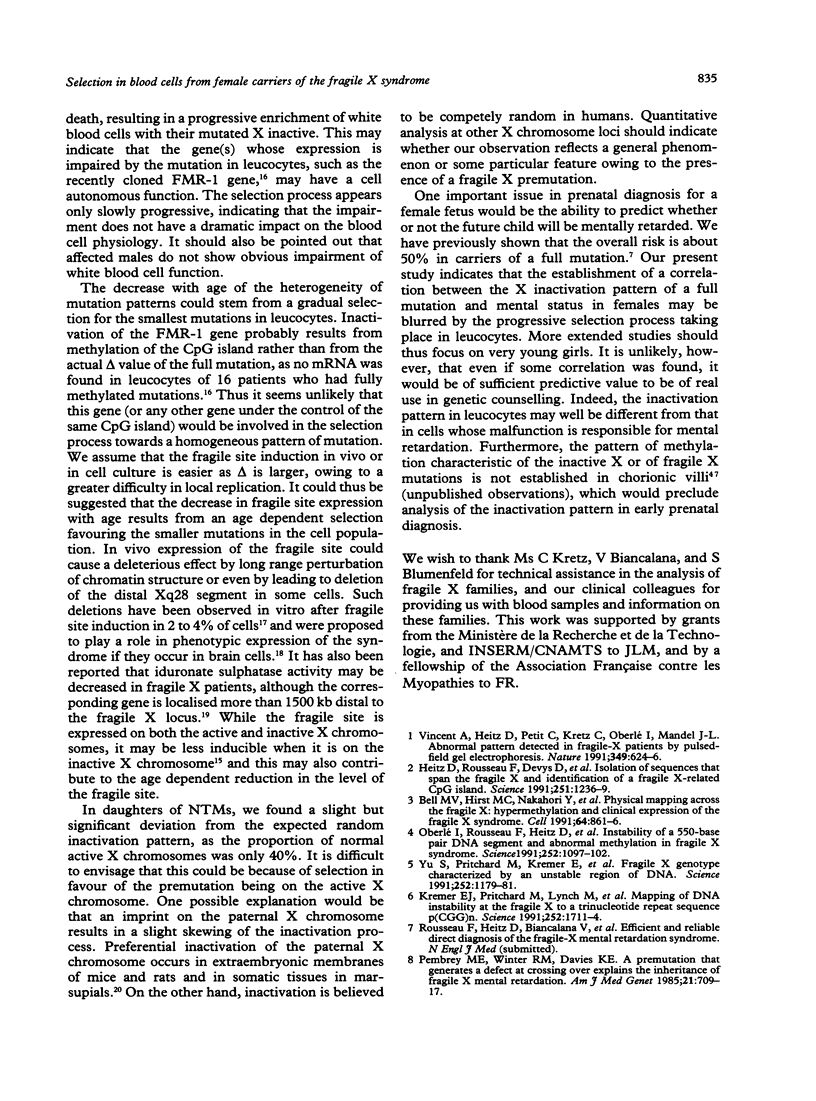
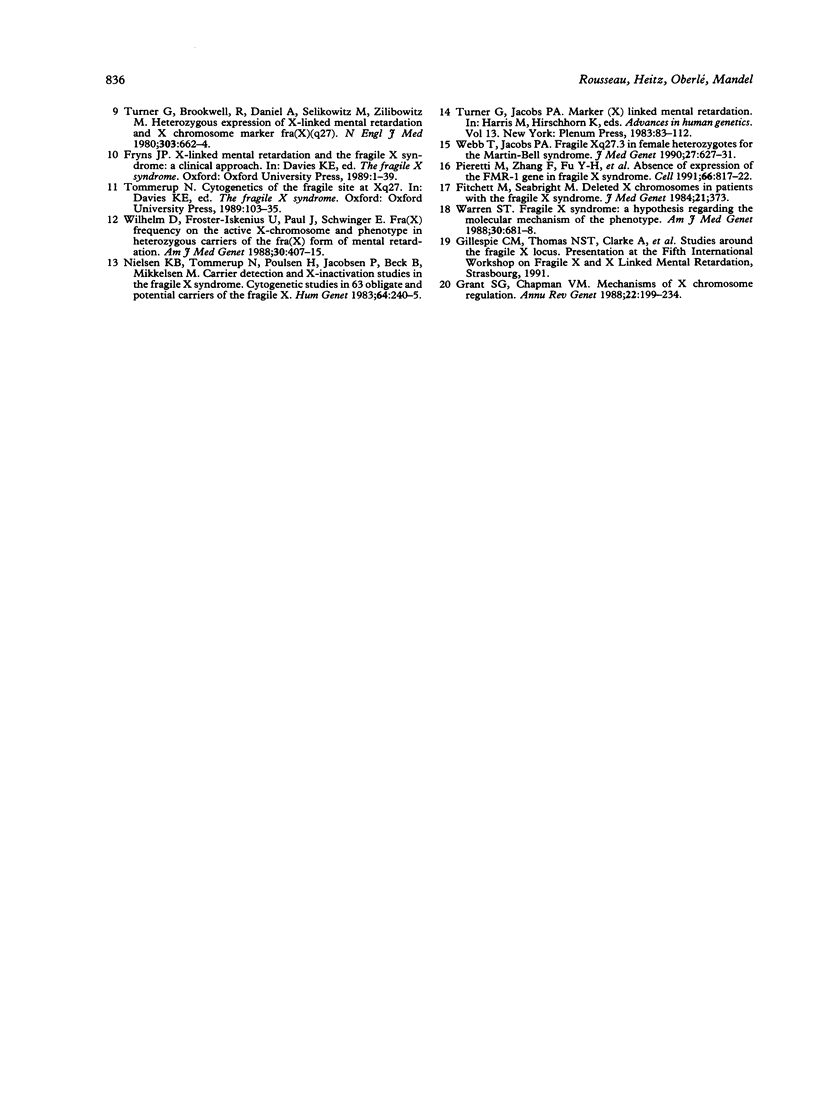
Images in this article
Selected References
These references are in PubMed. This may not be the complete list of references from this article.
- Bell M. V., Hirst M. C., Nakahori Y., MacKinnon R. N., Roche A., Flint T. J., Jacobs P. A., Tommerup N., Tranebjaerg L., Froster-Iskenius U. Physical mapping across the fragile X: hypermethylation and clinical expression of the fragile X syndrome. Cell. 1991 Feb 22;64(4):861–866. doi: 10.1016/0092-8674(91)90514-y. [DOI] [PubMed] [Google Scholar]
- Fitchett M., Seabright M. Deleted X chromosomes in patients with the fragile X syndrome. J Med Genet. 1984 Oct;21(5):373–373. doi: 10.1136/jmg.21.5.373. [DOI] [PMC free article] [PubMed] [Google Scholar]
- Grant S. G., Chapman V. M. Mechanisms of X-chromosome regulation. Annu Rev Genet. 1988;22:199–233. doi: 10.1146/annurev.ge.22.120188.001215. [DOI] [PubMed] [Google Scholar]
- Heitz D., Rousseau F., Devys D., Saccone S., Abderrahim H., Le Paslier D., Cohen D., Vincent A., Toniolo D., Della Valle G. Isolation of sequences that span the fragile X and identification of a fragile X-related CpG island. Science. 1991 Mar 8;251(4998):1236–1239. doi: 10.1126/science.2006411. [DOI] [PubMed] [Google Scholar]
- Kremer E. J., Pritchard M., Lynch M., Yu S., Holman K., Baker E., Warren S. T., Schlessinger D., Sutherland G. R., Richards R. I. Mapping of DNA instability at the fragile X to a trinucleotide repeat sequence p(CCG)n. Science. 1991 Jun 21;252(5013):1711–1714. doi: 10.1126/science.1675488. [DOI] [PubMed] [Google Scholar]
- Nielsen K. B., Tommerup N., Poulsen H., Jacobsen P., Beck B., Mikkelsen M. Carrier detection and X-inactivation studies in the fragile X syndrome. Cytogenetic studies in 63 obligate and potential carriers of the fragile X. Hum Genet. 1983;64(3):240–245. doi: 10.1007/BF00279401. [DOI] [PubMed] [Google Scholar]
- Pembrey M. E., Winter R. M., Davies K. E. A premutation that generates a defect at crossing over explains the inheritance of fragile X mental retardation. Am J Med Genet. 1985 Aug;21(4):709–717. doi: 10.1002/ajmg.1320210413. [DOI] [PubMed] [Google Scholar]
- Pieretti M., Zhang F. P., Fu Y. H., Warren S. T., Oostra B. A., Caskey C. T., Nelson D. L. Absence of expression of the FMR-1 gene in fragile X syndrome. Cell. 1991 Aug 23;66(4):817–822. doi: 10.1016/0092-8674(91)90125-i. [DOI] [PubMed] [Google Scholar]
- Turner G., Brookwell R., Daniel A., Selikowitz M., Zilibowitz M. Heterozygous expression of X-linked mental retardation and X-chromosome marker fra(X)(q27). N Engl J Med. 1980 Sep 18;303(12):662–664. doi: 10.1056/NEJM198009183031202. [DOI] [PubMed] [Google Scholar]
- Vincent A., Heitz D., Petit C., Kretz C., Oberlé I., Mandel J. L. Abnormal pattern detected in fragile-X patients by pulsed-field gel electrophoresis. Nature. 1991 Feb 14;349(6310):624–626. doi: 10.1038/349624a0. [DOI] [PubMed] [Google Scholar]
- Warren S. T. Fragile X syndrome: a hypothesis regarding the molecular mechanism of the phenotype. Am J Med Genet. 1988 May-Jun;30(1-2):681–688. doi: 10.1002/ajmg.1320300169. [DOI] [PubMed] [Google Scholar]
- Webb T., Jacobs P. A. Fragile Xq27.3 in female heterozygotes for the Martin-Bell syndrome. J Med Genet. 1990 Oct;27(10):627–631. doi: 10.1136/jmg.27.10.627. [DOI] [PMC free article] [PubMed] [Google Scholar]
- Wilhelm D., Froster-Iskenius U., Paul J., Schwinger E. Fra(X) frequency on the active X-chromosome and phenotype in heterozygous carriers of the fra(X) form of mental retardation. Am J Med Genet. 1988 May-Jun;30(1-2):407–415. doi: 10.1002/ajmg.1320300141. [DOI] [PubMed] [Google Scholar]




